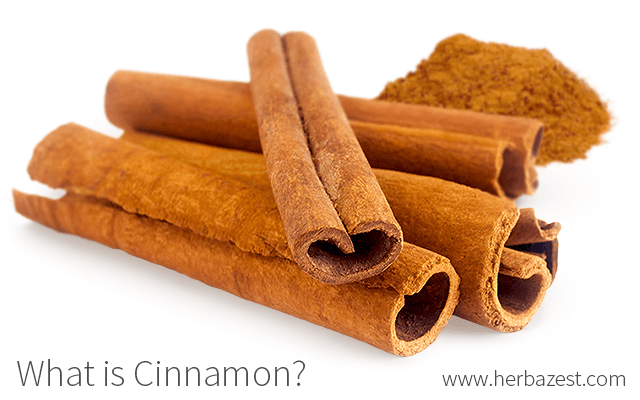Although cinnamon is a popular spice, enjoyed in a variety of culinary recipes, many may ask: what is cinnamon exactly?, where does cinnamon come from?, or how is it made? Learn more about the different varieties and types of cinnamon and their significance.
About the Cinnamon Plant
The use of cinnamon as a household spice can be traced back to 2800 BCE in its native Sri Lanka. The cinnamon spice comes from the bark of a tropical evergreen that grows up to 30 feet (9 m) tall, with leathery, green leaves and small, white flowers. The bark is dried before being sold either as ground cinnamon or in curled strips called quills and commonly known as cinnamon sticks.
The flavor that cinnamon adds to food, along with numerous health benefits, led many places all over the world to begin cultivating the plant including Mexico, Brazil, Africa, Asia, Caribbean, and French Guiana.
Cinnamon Family
The aromatic cinnamon tree belongs to the laurel family (Lauraceae), which comprises of over 3,000 flowering species, including avocado (Persea americana) and bay laurel (Laurus nobilis).
There are four types of cinnamon; however, Cinnamomum verum, whose scientific name literally translates to "true cinnamon," is widely recognized as the real cinnamon. This tropical evergreen is native to Sri Lanka and Southwest India. True cinnamon is most commonly known as Ceylon cinnamon, or Cinnamomum zeylanicum, an alternative botanical name that makes reference to Ceylon, the old name of Sri Lanka.
Ceylon cinnamon is regularly confused with another species, called Cinnamomum cassia. Often simply referred to as cassia, this tree is native to China, Vietnam, and Indonesia, and it is the most common spice consumed as cinnamon in North America.
However, cassia cinnamon and true cinnamon are two different species, originating from two distinct plants, with varying flavors and similar medicinal properties. It is not uncommon for cassia to be misrepresented as true cinnamon and for people to use the names of the two spices interchangeably. However, the benefits of cinnamon can slightly differ depending on the species as well as other characteristics, such as cinnamon toxicity and cinnamon side effects.
Cinnamon Varieties and Cultivars
The four main types of cinnamon are easy to distinguish based on their tastes, color, and origin:
- Real cinnamon, also known as Ceylon cinnamon (Cinnamomum zeylanicum) or true cinnamon (Cinnamomun verum), is light to medium reddish brown with a slightly sweet taste that is preferred by chefs and bakers. Due to its culinary and medicinal applications, it is widely considered as the best cinnamon.
- Korintje cinnamon (Cinnamomum burmanni), also known as Indonesian cassia, has a spicy taste with a dark reddish-brown hue.
- Saigon cinnamon (Cinnamomum loureirii) is very similar to Indonesian cassia; however, it exhibits both spicy and sweet flavor.
- Chinese cinnamon, also known as cassia (Cinnamomun cassia or Cinnamomum aromaticum) is dark reddish-brown and spicy as well, but with a bitter taste.
The true cinnamon is the most highly-priced and difficult-to-get type, while the other related species are significantly less expensive and widely available in North America. It is not uncommon to find cinnamon supplements, including cinnamon capsules and tablets, having a mix of true cinnamon and other varieties of cassia.
Importance of Cinnamon
Cinnamon is one of the most widely used spices in the world with mentions dating back to the Old Testament, ancient Egyptians, and Christopher Columbus.
Its role as a major trade article around the world goes back to before the 1500s and is still very significant today. A high demand for buying cinnamon around the world has helped provide stable jobs in the regions where it is grown. This demand still continues to grow, and the global export value of cinnamon in 2019 was of 690,318 million USD, with the United States and Mexico as the largest importers.1
Mainly used as a spice to add flavor to food, the bark of the cinnamon tree is also cultivated for medicinal purposes. It has been traditionally used to treat colds, flu, and digestive problems, and it is still used for these purposes today.
Specific uses of cinnamon vary based on the cultivating region. The Chinese use cinnamon bark to treat conditions regarding the torso, while twigs are applied to conditions affecting fingers and toes. In India, cinnamon is used as a pain reliever, especially during labor contractions. Both regions use cinnamon to regulate menstrual cycles and ease their symptoms.
The basic question of "what is cinnamon?" can best be answered by evaluating the origins, types, culinary applications, and medicinal uses of this aromatic spice.
Sources
- Cinnamon and Cassia: The Genus Cinnamomum, pp. 22-23
- Louisiana State University, Pennington Biomedical Research Center, Cinnamon
- National Plant Germplasm System, Taxon: Cinnamomum verum J. Presl
- Penn State University, Information: Cassia and Cinnamon
- University of Connecticut, Cinnamomum verum J.Presl
- University of Michigan Health, The Case of Spices
- University of Wisconsin, Cinnamomum zeylanicum: The ‘sweet wood’ of the world | One of the Oldest Spices Known to Man | Classification
- Encyclopedia of Herbal Medicine, Cinnamon
- Kew Royal Botanic Gardens, Cinnamon-a festive favourite
- Pharmacognosy Research, Cinnamon: Mystic powers of a minute ingredient, 2015
Footnotes:
- FAOSTAT. (2019). Countries by commodity. Cinnamon (Canella). Retrieved October 25, 2021, from: https://www.fao.org/faostat/en/#rankings/countries_by_commodity_exports




